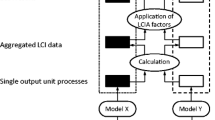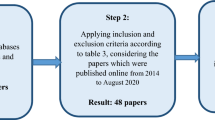Abstract
Introduction
Normalization is an optional step in LCIA that is used to better understand the relative importance and magnitude of the impact category indicator results. It is used for error checking, as a first step in weighting, and for standalone presentation of results. A normalized score for a certain impact category is obtained by determining the ratio of the category indicator result of the product and that of a reference system, such as the world in a certain year or the population of a specific area in a certain year.
Biased Normalization
In determining these two quantities, the numerator, the denominator, or both can suffer from incompleteness due to a lack of emission data and/or characterisation factors. This leads to what we call a biased normalization. As a consequence. the normalized category indicator result can be too low or too high. Some examples from hypothetical and real case studies demonstrate this.
Consequences of Biased Normalization
Especially when for some impact categories the normalized category indicator result is right, for others too low, and for others too high, severe problems in using normalized scores can show up. It is shown how this may affect the three types of usage of normalized results: error checking, weighting and standalone presentation.
Detection and Remedies of Biased Normalization
Some easy checks are proposed that at least alert the LCA practitioner of the possibility of a biased result. These checks are illustrated for an example system on hydrogen production. A number of remedies of this problem is possible. These are discussed. In particular, casedependent normalization is shown to solve some problems, but on the expense of creating other problems.
Discussion
It appears that there is only one good solution: databases and tables of characterisation factors must be made more completely, so that the risk of detrimental bias is reduced. On the other hand, the use of the previously introduced checks should become a standard element in LCA practice, and should be facilitated with LCA software.
Similar content being viewed by others
References
Anonymous (2000): Environmental management — life cycle assessment — life cycle impact assessment (ISO 14042). ISO, Geneva, Switzerland
Breedveld L, Lafleur M, Blonk H (1999): A Framework for Actualising Normalisation Data in LCA: Experiences in the Netherlands. Int J LCA 4(4) 213–220
Frischknecht R, Jungbluth N, Althaus H-J, Doka G, Dones R, Hirschier R, Hellweg S, Humbert S, Margni M, Nemecek T, Spielmann M (2004): Implementation of life cycle impact assessment methods. Ecoinvent report No. 3. Swiss Centre for Life Cycle Inventories, Dübendorf, Switzerland
Guinée JB, Gorrée M, Heijungs R, Huppes G, Kleijn R, Koning A de, Oers L van, Wegener Sleeswijk A, Suh S, Udo de Haes HA, Bruijn H de, Duin R van, Huijbregts MAJ (2002): Handbook on life cycle assessment. Operational guide to the ISO standards. Kluwer Academic Publishers, Dordrecht, The Netherlands
Hauschild M, Wenzel H (1998): Environmental assessment of products. Volume 2: Scientific background. Chapman & Hall, London, United Kingdom
Heijungs R (1997): Normalization of impact scores in LCA: what, why and how? In: ‘Ökobilanzen — Trends und Perspektiven’. Workshop der GDCh-Fachgruppe Umweltchemie und Ökotoxikologie; Gesellschaft Deutscher Chemiker, Frankfurt am Main, Germany
Heijungs R, Kleijn R (2001): Numerical approaches to life-cycle interpretation. Five examples. Int J LCA 6(3) 141–148
Heijungs R, Suh S (2002): The computational structure of life cycle assessment. Kluwer Academic Publishers, Dordrecht, The Netherlands
Huijbregts MAJ (2000): Priority assessment of toxic substances in the frame of LCA. Calculation of toxicity potentials for ethylene oxide and hydrogen fluoride. University of Amsterdam, Amsterdam, The Netherlands
Huijbregts MAJ, Norris GA, Bretz R, Ciroth A, Maurice B, Bahr B von, Weidema BP, Beaufort ASH de (2001): Framework for Modelling Data Uncertainty in Life Cycle Inventories. Int J LCA 6(3) 127–132
Norris GA (2001): The Requirement for Congruence in Normalization. Int J LCA 6(2) 85–88
Rovers V (2005): Life cycle assessments of different production routes for hydrogen. Student report, Leiden University, Leiden, The Netherlands
Seppälä J, Basson L, Norris GA (2001): Decision Analysis Frameworks for Life-Cycle Impact Assessment. J Industr Ecol 5(4) 45–68
Suh S, Lenzen M, Treloar GJ, Hondo H, Horvath A, Huppes G, Jolliet O, Klann U, Krewitt W, Moriguchi Y, Munksagaard J, Norris G (2004): System boundary selection in life-cycle inventories using hybrid approaches. Environ Sci Technol 38(3) 657–664
Tolle DA (1997): Regional Scaling and Normalization in LCIA. Development and Application of Methods. Int J LCA 2(4) 197–208
Udo de Haes Ha, Finnveden G, Goedkoop M, Hauschild M, Hertwich EG, Hofstetter P, Jolliet O, Klöpffer W, Krewitt W, Lindeijer E, Müller-Wenk R, Olsen SI, Pennington DW, Potting J, Steen B (2002): Life-cycle impact assessment: Striving towards best practice. SETAC Press, Pensacola, USA
Author information
Authors and Affiliations
Corresponding author
Additional information
ESS-Submission Editor: Duane A. Tolle (tolled@battelle.org)
Rights and permissions
About this article
Cite this article
Heijungs, R., Guinée, J., Kleijn, R. et al. Bias in normalization: Causes, consequences, detection and remedies. Int J Life Cycle Assess 12, 211–216 (2007). https://doi.org/10.1065/lca2006.07.260
Received:
Accepted:
Published:
Issue Date:
DOI: https://doi.org/10.1065/lca2006.07.260




